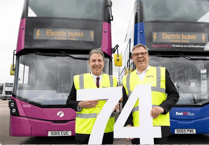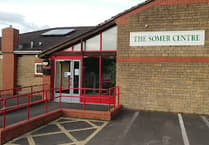On Wednesday 24th January, Dan Norris made a special visit to Radstock’s Somerset Coalfield Life Museum to talk about WECA’s latest plans to heat local homes using water from flooded mines.
Mayor Norris was pleased to announce the initiative at Radstock Museum, which he hailed as “one of his favourites in the whole district”. Dan was excited to tie past, present and future together through the flooded mines, which had some sentimental impact on him as he mentioned he comes from a mining family.
The purpose of the meeting was to discuss the future, as the country continues to face a cost of living crisis and a global climate emergency. Dan noted that it was important that we are “taking every possible opportunity and do our bit for a better future”.
It was revealed that the West of England Combined Authority would be backing the ‘Heat from Former Mines’ initiative, liaising closely with colleagues from the unitary authorities to deliver. The plan is to extract the heat that exists in the water of the flooded former pits. The water is between 10 and 20oc, and the thermal energy could be used to create heating networks if it can be obtained in an efficient, sustainable way.
Thinking ahead to the future, Dan Norris said: “My fantasy is that perhaps Paulton Memorial Hospital could be powered by the old pit at Paulton, or the village of Pensford could have a heating network powered by the old pit”.
Around a quarter of homes on average in England sit above mine works, and in our area there are even more; there are around one hundred former pits in the West of England, so the green energy potential from this WECA-funded initiative is huge. Speaking of funding, Dan Norris revealed that £1.6 million would be pledged toward the Heat from Former Mines plan, and the money for this would be coming out of the Government’s £60 million Green Recovery Fund.
The Heat from Former Mines initiative will have three phases, and phase one starts this summer. Experts will be analysing maps and exploring the plans that were made to close the pits down across the West of England. Phase two will focus particularly on areas where there is a higher density of former pits and start planning for making 20cm bore holes in the most promising areas where the water is hotter. Bore holes will need to be 300 to 350 metres deep, and will cost £1000 per metre. The plan is to drill two of these to begin, which means that almost half of the WECA-allocated funding will be used at this stage, before testing takes place in phase three.
“Hopefully, the initial work will show that there are maybe twenty or thirty really exciting possibilities and I hope that we would have to find more money to drill more bore holes so that we can do even more on this front”.
Taking a comical swipe at Bristol’s underground rail network idea, Dan said: “This is the kind of underground I’m genuinely interested in, I have to be honest”.
“Wouldn’t it be fantastic if the contributions that our mining community made unknowingly to co2 emissions could now be turned around to, sustainably and in an environmentally friendly way, make sure that our future is much brighter and more affordable? With the increasing cost of the nuclear power plant at Hinkley, this could provide much cheaper energy too, as well as a sustainable option moving forward”.
The Coal Authority own the pits, but the land above is owned by private land owners, so the owners’ permission will need to be sought for the bore holes are drilled, thus making it hard to put a timeline on when exactly each phase will be rolled out, but the Metro Mayor is confident that “this will be a benefit to every citizen if we get it right”.
Following Dan’s unveiling, speakers included Radstock Town Clerk George Clutten and Shane Gould, Head of Industrial Heritage Strategy at Historic England.
Dan Martin, a hydrogeologist from The Coal Authority talked about about how heat extraction would work.
He explained that the mine water is heated due to the geothermal energy coming from the Earth’s core. That water will then be extracted into a heat exchanger which takes 5oc from the water’s heat. A heat pump will boost the temperature of the water for it to be distributed to houses and civic buildings connected via a heat network. Gateshead’s mine water geothermal heating scheme is the first operational example of this in the UK.
Retired miner Bryn Hawkins, 82, was a guest of honour at the event. Bryn does an excellent job of keeping the mining history of our local area alive, and was thrilled to hear the plans to bring the abandoned mines into the future.
“The project looks very exciting l will be watching it with interest, it looks very simple but l expect quite expensive to get up and running.
“The nice thing for me and the Somerset miners Welfare Trust committee is this is another way of keeping our campaign reminding local people there were coal mines in this area.
“The twenty metal miners and the Somer Valley FM radio program ‘When Coal Was King’ has at last got everyone talking about the Somerset Coal Mines, now with using the water underground to heat homes it’s going to make people even more aware.
“If the old miners that worked hard in the pits could come back and see what could happen, I’m sure they would be over the moon that something good is going to come from the underground workings to heat homes in the future. These are very exciting times for our area”.


